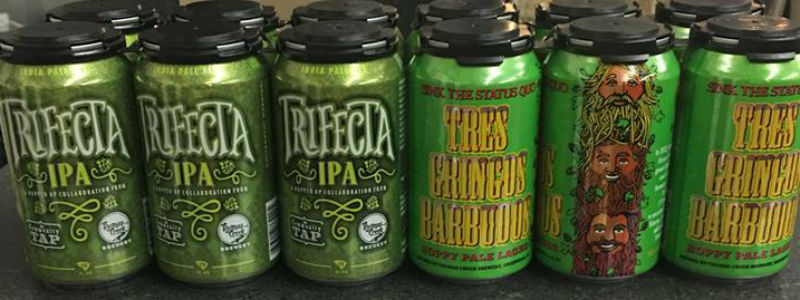
Appeal to the masses and listen to the market. Seems simple, right?
For veteran breweries that have become regional names, sometimes even more has been needed to be done lately and attracting eyes to their products help with a change in its look.
For St. Louis’ Schlafly Beer, it meant telling the story for their Cellar Selections.
“We found that this line of beers wasn’t serving the right purpose, and we knew this was the perfect avenue to show off some of the ways we innovate and experiment,” explained Wil Rogers, the brewery’s Brand Manager. “The fresh take on the line really expresses that theme.”
That meant changing the look of the 750s.
“We take the feedback from our drinkers pretty seriously,” Rogers said. “Last year, the feedback on our 750mL line was that drinkers were used to getting beers of similar styles in smaller formats (6pk/12oz, 4pk can, etc.).
“As a brewery we took a step back and asked ourselves what would make these larger bottles, which offer up the opportunity to share in large groups, more eye-catching when it comes to flavor profiles, ingredients, and the overall look and feel.”
The bottle design now showcases the research and development inside each of the inventive beers with a handwritten look and feel and a descriptive neck tag.
“We’re about to release our second in the series and have heard nothing but good feedback,” Rogers said.
“We want the rustic design to feel like our brewers invited you to try their secret experimental brews, which is how many of these Cellar Selections started,” added founding brewer Stephen Hale.
A veteran in South Carolina, Thomas Creek Brewery underwent changes to its look with all new packaging that is bright and colorful,” said Sales and Marketing Rep Will Lawrence.
“It was time for an upgrade, [the] same great beer with a new look,” he said. “[We] kept our signature logo and kept the beer amazing, just had to add a little spark our image.”
Everyone had a right to chime in and voice their opinion on the change, Lawrence said, noting there were lots of meetings and having the staff make a mutual decision was key to moving forward with the new packaging.
“We’ve already seen a boost in off-premise sales,” he said of the switch.
Schlafly was putting some traditional styles into their 750s, beers that they really loved and wanted to drink,” Rogers said.
“In this industry, the consumer is always wanting to explore new things,” he noted. “It wasn’t tough to hear the feedback. We know that although we brew a lot of traditional styles, we also know that we’re great at innovation and experimentation, so we saw this series as the perfect opportunity to express that to our drinkers.”
Rogers said some takeaways for more established breweries is not to change who you are just to chase a trend.
“Find ways to show the consumer how you can innovate and experiment, but be sure to keep that connected to your brewery’s roots,” he said.
Lawrence echoed that sentiment.
“The truth be told, we have a small batch program that is constantly producing new and exciting stuff,” he pointed out. “This keeps the brewers creative juices flowing and the market excited about what we are producing. There are some accounts out there that only want weird stuff. You’ve got to appeal to the masses and listen to the market.”




More like jack up the prices at your taprooms and retail, lose some of the most important employees in the company, and lose sight of what made the brewery great in the first place.